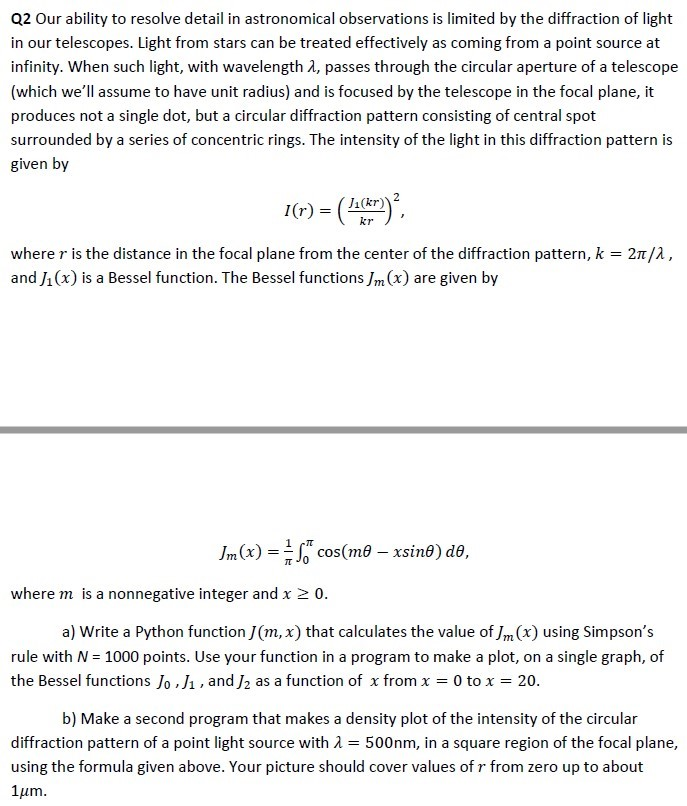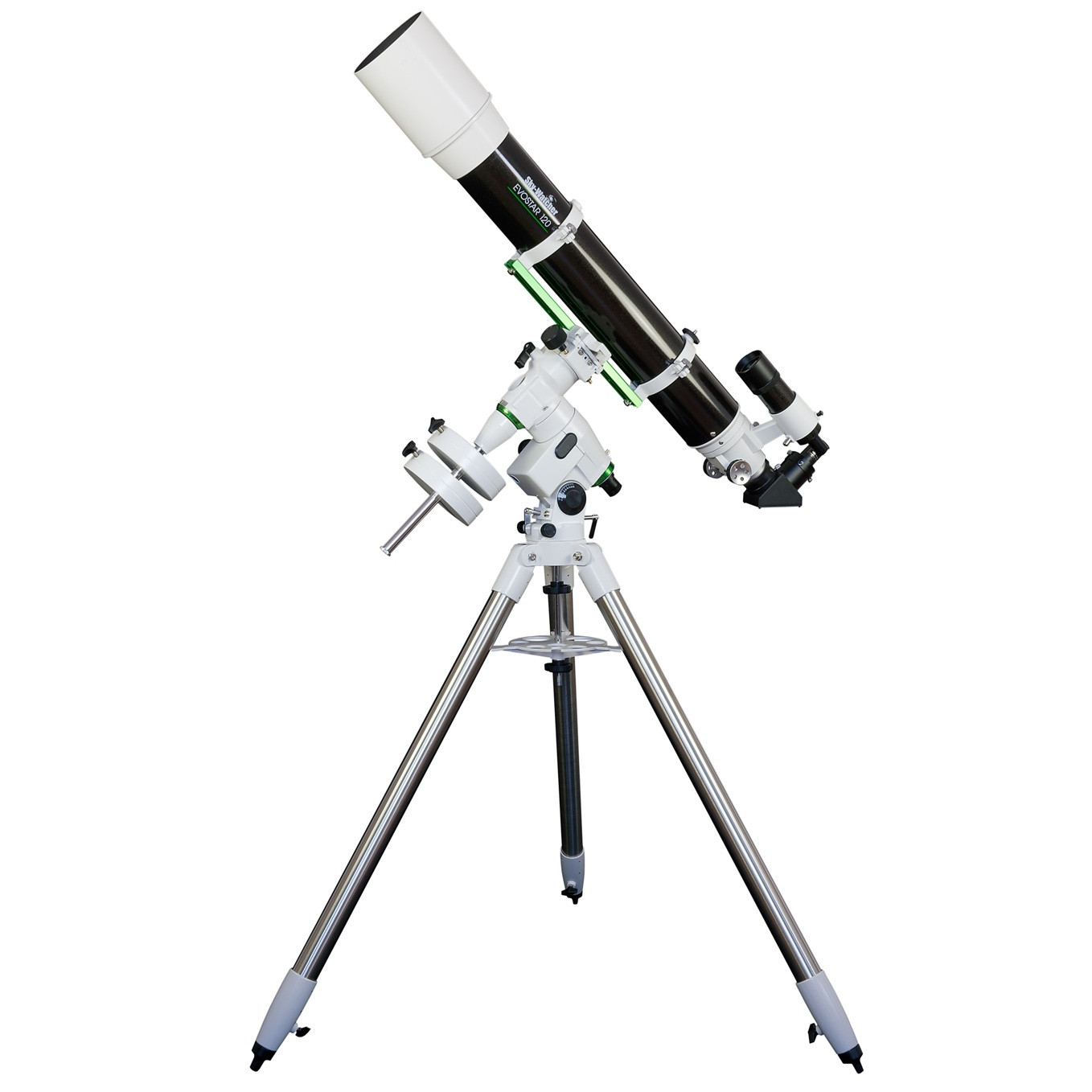


(credit: Ricnun, Wikimedia Commons) (b) The photo on the right was captured by Hubble. These two photographs of the M82 galaxy give an idea of the observable detail using the Hubble Space Telescope compared with that using a ground-based telescope.

However, Figure 3 gives an indication of the extent of the detail observable with the Hubble because of its size and quality and especially because it is above the Earth’s atmosphere. As with all instruments, there are other effects, such as non-uniformities in mirrors or aberrations in lenses that further limit resolution. The actual resolution of the Hubble Telescope is not quite as good as that found here. However, the effect is still there, and there is a diffraction limit to what is observable. As noticed, diffraction effects are most noticeable when light interacts with objects having sizes on the order of the wavelength of light. The angle found in part (a) is extraordinarily small (less than 1/50,000 of a degree), because the primary mirror is so large compared with the wavelength of light. The first minimum is at an angle of θ = 1.22λ/ D, so that two point objects are just resolvable if they are separated by the angle The Rayleigh criterion for the diffraction limit to resolution states that two images are just resolvable when the centre of the diffraction pattern of one is directly over the first minimum of the diffraction pattern of the other. The accepted criterion for determining the diffraction limit to resolution based on this angle was developed by Lord Rayleigh in the 19th century. It can be shown that, for a circular aperture of diameter D, the first minimum in the diffraction pattern occurs at θ = 1.22 λ/D (providing the aperture is large compared with the wavelength of light, which is the case for most optical instruments). Just what is the limit? To answer that question, consider the diffraction pattern for a circular aperture, which has a central maximum that is wider and brighter than the maxima surrounding it (similar to a slit). How far away can you be and still distinguish the two lines? What does this tell you about the size of the eye’s pupil? Can you be quantitative? (The size of an adult’s pupil is discussed in another chapter.) Take-Home Experiment: Resolution of the Eyeĭraw two lines on a white sheet of paper (several mm apart). Telescopes are also limited by diffraction, because of the finite diameter D of their primary mirror. So diffraction limits the resolution of any system having a lens or mirror. Thus light passing through a lens with a diameter D shows this effect and spreads, blurring the image, just as light passing through an aperture of diameter D does. Be aware that the diffraction-like spreading of light is due to the limited diameter of a light beam, not the interaction with an aperture. The acuity of our vision is limited because light passes through the pupil, the circular aperture of our eye. There are many situations in which diffraction limits the resolution. This limit is an inescapable consequence of the wave nature of light. If they were closer together, as in Figure 1(c), we could not distinguish them, thus limiting the detail or resolution we can obtain.

The pattern is similar to that for a single point source, and it is just barely possible to tell that there are two light sources rather than one. How does diffraction affect the detail that can be observed when light passes through an aperture? Figure 1(b) shows the diffraction pattern produced by two point light sources that are close to one another. (c) If they are closer together, they cannot be resolved or distinguished. (b) Two point light sources that are close to one another produce overlapping images because of diffraction. (a) Monochromatic light passed through a small circular aperture produces this diffraction pattern. The effect is most noticeable when the aperture is small, but the effect is there for large apertures, too. Light from different parts of the circular aperture interferes constructively and destructively. This pattern is caused by diffraction similar to that produced by a single slit. Instead of a bright spot with sharp edges, a spot with a fuzzy edge surrounded by circles of light is obtained. The figure below shows the effect of passing light through a small circular aperture. While this can be used as a spectroscopic tool-a diffraction grating disperses light according to wavelength, for example, and is used to produce spectra-diffraction also limits the detail we can obtain in images. Light diffracts as it moves through space, bending around obstacles, interfering constructively and destructively.


 0 kommentar(er)
0 kommentar(er)
